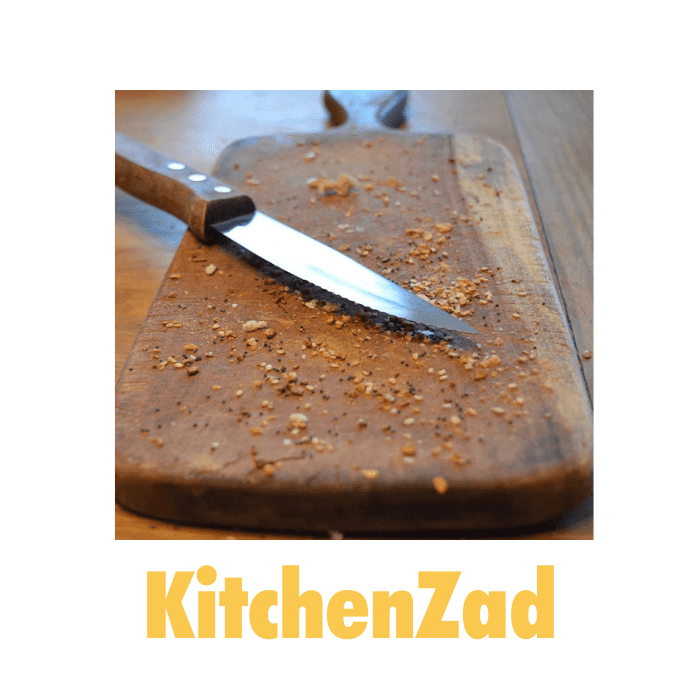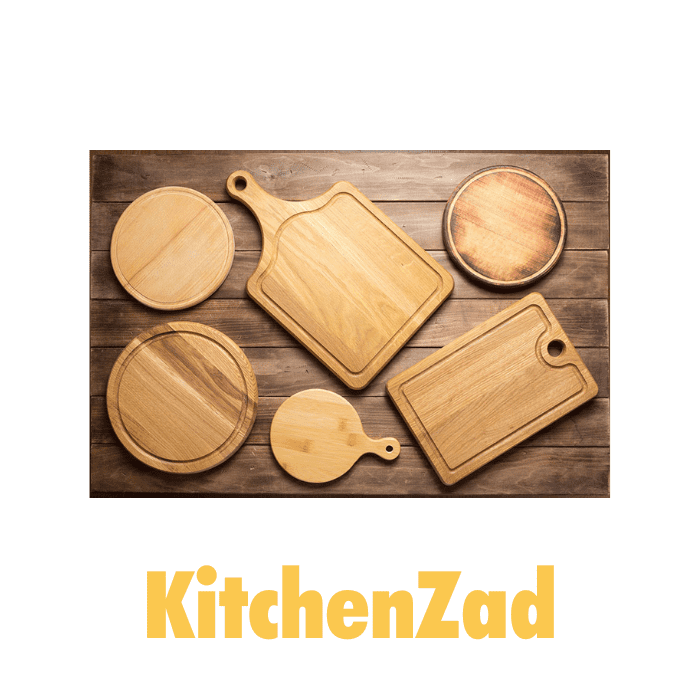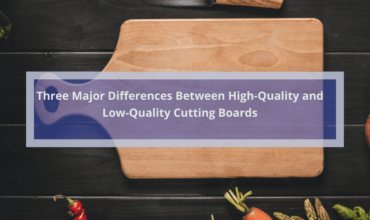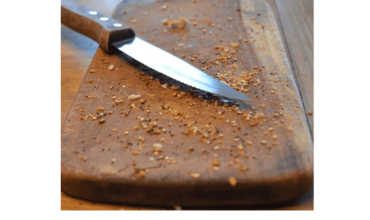The thickness of your cutting boards is an important factor to consider when purchasing one.
Learn the ideal thickness for your cutting board to maximize durability, performance, and safety. Discover the optimal material and consistency for a cutting board.

The type of cutting board you select will impact its thickness.
Significantly, a cutting board’s thickness is determined by the following:
- material
- purpose
- and manufacturing methods.
If you want a light cutting board, professional-grade rubber boards are thin and light and will match your needs.
They come in half an inch to an inch thick.
Using plastic or silicone as an example, cutting boards made of these materials can be as slim as 1/2 inch, thus not creating much impact when cutting.
Wood cutting boards are pretty distinct from other types of cutting boards.
Many have measurements between 1 1/4 inches and 2 inches, making them noticeably thicker than the plastic or silicone options.
This sturdiness ensures the surfaces can withstand more regular use.
Read also: Why is It Important To Use A Cutting Board?
Height from Floor
Julia Child had greater-than-average stature.
The height of a typical kitchen counter is 36 inches, though she opted for 38 inches.
You can still customize items around the pre-installed counters to meet your needs.
If you’re not of average height, this requires creative thinking.
For someone with a shorter-than-average height, using a stepstool may prove helpful.
Individuals of a taller stature might benefit from an extra thick cutting board or trivet to add an extra inch or two.
Do what you prefer for the best results.
Pros and cons of thin cutting board
Pros
- For light cutting tasks, such as those for a sandwich board, using 3/8 inch thin plastic boards saves money in the long run.
Replacing them is cheaper compared to more durable boards of the same size.
- They are easy to clean
- Dishwasher safe
- Durable
- Plastic cutting boards are often less expensive than other types
- Require little maintenance.
- Flexible and lightweight
- Easier to manoeuvre and store
Cons
If the cutting board is too thin, it may easily become warped or cracked.
Pros and cons thick cutting boards
Pros
- Due to their slower absorption rate of moisture, closed-grain cutting boards that are thicker in size are less likely to bend, warp or split.
- Boards with thicker bodies are rich in fibre content.
This made them more resistant to damage from sharp knives and heavy-duty meat hammers.
They are less likely to dent, scratch, or groove.
- Thicker boards provide more durability and stability when chopping food.
This can decrease the risk of accidents.
- last longer and can handle heavier loads,
cons
- A cutting board thicker than 2 ½ inches will be too bulky and difficult to be used regularly or manoeuvred easily.
- What’s more, its increased weight poses a hazard if it falls.

Is serving boards’ thickness good for cutting?
When considering weight and thinness, go with a serving board which is typically ¾”-1” thick, as opposed to a cutting board which can be 1.25” or thicker.
This will provide you with a lighter option.
If you decide to use your cutting board for chopping, don’t worry about the knife marks. What matters most is that it will be loved!
What material of cutting boards do chefs use? and what do they recommend?
When preparing tough ingredients, such as raw meat, chefs often utilize thick wooden cutting boards.
Chefs need a cutting board that can withstand a lot of pressure without breaking.
Accordingly, it also should offer the highest stability on surfaces and this is what thick ones do.
Chefs suggest that end-grain cutting boards should be at least 2 inches (or 5 centimetres) thick.
What is the standard size and thickness of cutting boards?
When selecting a wooden cutting board for an ordinary kitchen, an ideal size would be 12×18 inches and a thickness of 2 inches.
However, your decision should be based on what fits your cooking requirements best.
No matter the dish you are preparing, always keep your work area sanitized and your knives sharpened for safe food preparation.
Read Also: 10 Best Over the Sink Cutting Board

Frequently asked questions for How thick should I make my cutting board?
How to reduce the risk of warping?
To protect the wooden boards from warping and drying out, apply a generous amount of mineral oil to the board’s entire surface.
Then allow it to soak in overnight.
This will create a moisture-resistant barrier while still providing lubrication.
How do I care for my cutting board to ensure its longevity?
Internal Link
What oil shouldn’t I use?
– Prevent using organic oils (like nuts, olive, and vegetable oil).
The natural fats in each of these products can spoil over time.
Individuals with a nut allergy may experience an allergic reaction to certain types of nut oils.
– Avoid Tung oil.
If you don’t use a chemical heavy metal dryer, applying pure Tung oil can become an unpleasant job since it takes so long to dry.
Read also: 10 Best Cutting Boards

